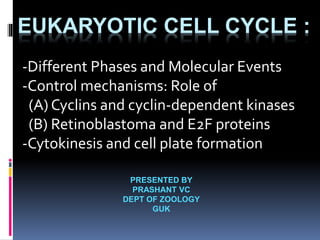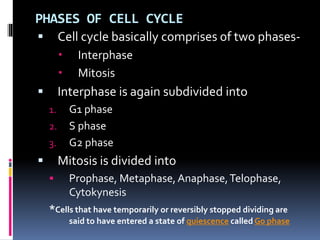The document provides an overview of the eukaryotic cell cycle, including its phases (interphase and mitosis) and key regulatory mechanisms involving cyclins and cyclin-dependent kinases (CDKs). It outlines the significance of checkpoints in maintaining cell division fidelity and details the molecular processes, such as cytokinesis and the roles of retinoblastoma and E2F proteins in cell cycle transitions. The document emphasizes the importance of proper biochemical interactions for cell progression and the mechanisms ensuring accurate chromosome distribution.



















![CYCLIN AND CDK
[Animal cells have atleast 10 different cyclins
(A,B and so forth) and atleast 8 cdks(cdk1
through cdk8), which act in various combinations
at specific points in the cell cycle]](https://image.slidesharecdn.com/eukayoticcellcycleprashant-221017104512-965b63c7/85/Eukayotic_cell_cycle-Prashant-ppt-20-320.jpg)


























